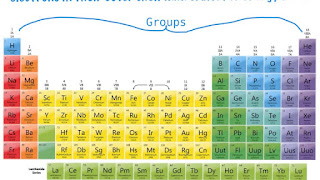Aquatic & herbaceous plants
Aquatic plants
Plant that grow in water
PLANTS FIRST GREW IN WATER, and slowly evolved as we see them
growing on land. Over the time, than many new aquatic plants, like water
lilies, water hyacinths and grass-like reeds, rushes and papyrus have bloomed
in water.
Floating
plants
Plant like water lily and hyacinth float on the surface of water. The leaves that float are attracted to long, flexible stalks whose roots are firmly fixed in the mud of the river bed however, floating plants cannot live in fast-flowing water.
Floating
plants do not sink
Some floating plants have air sacks in their stems and
leaves. Leaves of some other plants, like the water lily, turn up at the ends
and float like boats on the surface of water.
World's
biggest water plants
The world's biggest water plants is the giant lily of the
Amazon in south America with floating leaves that are 2 m wide and can bear the
weight of the child.
Plants
pharaohs used to write on
The ancient pharaohs used paper made from the pith of papyrus
stems for writing. The papyrus, a gient reed that grows 3 m tall along the
River Nile, was used for making paper by the Egiptians 5,000 years ago. The
word paper is made from wood pulp
Water
hyacinths - a nuisance
The fast growth of the beautiful hyacinth flower chokes
waterway and blocks the path of boats. So, they are considered a nuisance
Life
in water
Slow-moving rivers and shallows in lakes have all kinds of
water plants of them. Most of the plants are connected to the river bed, but a
few get their nutrients from the water. Some plants are inside the water while
others float on the surface. Emergent are plants like rushes and reeds as they
grow out of water.
Aquatic
plants and river current
Water plants have firm roots to save themselves from strong
currents. Their leaves are fanwort that do not resist water current. The river
water current. The river water crowfoot plant has streamlined leaves to survive
in fast-flowing streams.
Bug-eating
water plants
The bladderwort plant that grows in swamps has under water
bladders on itsw stem. These open up when any insect like a water-flea comes
near these bladders, the bladder open up and sucks in the insect with the
flowing water.
Water
plants in some lake
The chemical composition of the water is not the same for all
the lakes. So, all lakes cannot have plant have them. Some lake have water darning
from lime-rich soils and so are rich in plant life. The lakes near acid soil do
not have plants.
Herbaceous plants
Grassland
- all grass
IN THE FIRST LOOK, grassland look as vast lawn-mile of green
grass. But in fact there are many types of grass, like tussock grass, mar ram
grass, meadow grass, blue grass and many more, and also many types of herbs and
flowers.
Rokerboom
In topical grasslands like the veld of south Africa, where is
there is little water; the rokerboom trees has huge swollen trunk that stores
water for the tree for its use in dry periods.
South
American pampas
The pampas stretches across Argentina, Uruguay and
southeastern brazil, forming the largest area of temperate grassland in the
southern hemisphere. Many parts of the pampas are dominated by tussock grasses
like those seen in the foreground.












Comments
Post a Comment